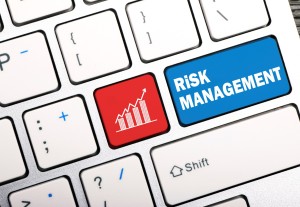Companies are increasingly recognizing the importance of regular data backups. Backups can spare you from costly, permanent data loss and damaging amounts of downtime in the event of an IT disaster.
Choosing the appropriate data backup solutions for your company can prove challenging. While working within your budget, you need to account for the volume and types of data, and figure out ways to protect the data from theft, corruption and loss. Your methods for backing up data should rest on clear, thoughtful IT policies.
A recent survey reported in an article from Business Cloud News highlights some of the problems with sub-standard data backups. The survey respondents were businesses that had lost important data. Although 86% of them were using some form of data backup at the time of their loss, their backup methods usually had flaws. They may have forgotten to include one of their devices in the backup process. Their backup method may have failed to work reliably. Sporadic backups may have resulted in outdated copies of the data. There are a number of possibilities for why data backups can fail.
Furthermore, even if the data get backed up reliably, it’s possible that the backup storage solution is insecure. And when you transfer data to a storage location, which may be in the cloud, you can lose or expose data in transmission. A recent CIO article points out how companies frequently use insecure methods for transmitting data in the cloud and may fail to enforce any file-sharing policies they’ve laid out for employees.
How can you strengthen your backup solutions?
So that you don’t wind up with the steep cost and profound frustration of losing data in spite of performing backups, the following are several tips for strengthening your backup solutions:
Automation. As long as there’s still human oversight and checks in place, you can rely more on automated processes to back up your data. Automated processes can get configured to operate on a regular schedule, reducing the chances that an employee may forget to perform a backup. Automation can also prevent various human errors, such as accidental file deletion during transfers.
Organization. Different kinds of data require different backup schedules and methods. For example, sensitive and critical information requires secure and frequent backups. Some types of data need to get stored in a way that allows for quick retrieval, while others can get archived more remotely. Furthermore, well-organized data backups mean that you always know the location of every file or application. Good organization is an important quality for rapid data restoration after an IT disaster.
Redundancies. Let’s say you’ve saved all your data backups in one location. What happens if there’s a massive power outage, equipment failure, fire or flood? Your data may get wiped out. You should have copies of valuable data in multiple locations. For example, high-quality cloud-based providers may store your data in more than one secure location, so that even if there’s an equipment failure or outage in one place, your information remains intact.
Encryption. Especially when it comes to sensitive or confidential information, use encrypted channels to transmit it and select storage locations with high levels of security. If you’re selecting a cloud-based program for data backups, look into the provider’s security policies and track record.
Policy enforcement. Without clear, enforceable policies or any cyber training, your employees may treat your data carelessly. Carelessness includes saving copies of sensitive data to insecure locations, emailing confidential files, and failing to check if data backups proceeded successfully.
Please contact us to further discuss the right data backup solutions for your business. We are dedicated to protecting your data and saving you time and money by coming up with the best backup methods that fit your budget.



